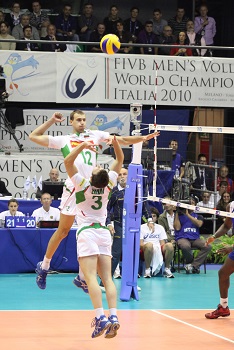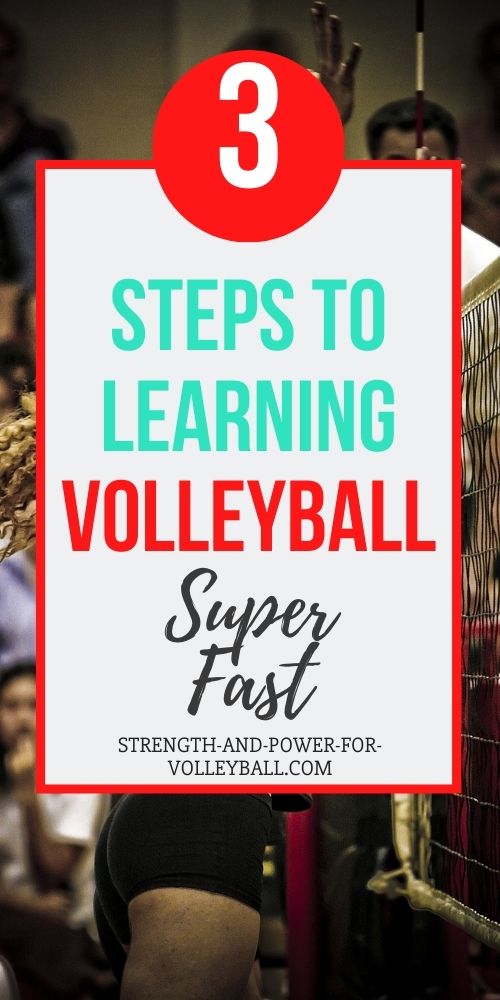Learning Volleyball Skills
Key strategies for volleyball training
Learning volleyball skills and keys to making successful plays. The following are key points to developing volleyball skills.
Learning Volleyball Skills - Hitting
The first thing you have to do when learning to hit a volleyball is learn the right way to contact the ball.
If you practice hitting and aren't focused
on contacting the ball correctly, then you are wasting your time.
When you hit, you have to create topspin.
The goal with spiking should be to make the ball spin every time. If the
ball isn't spinning after contact then the contact wasn't correct.
No lazy approaches.
In practice, no lazy approaches. Focus on learning the right way to approach early on. Bad approaches just enforces bad habits.
You want your arm to be vertical when making contact with the ball.
Get your arm vertical and create topspin on the ball. If you
do these two things then you'll be a pretty good hitter.
Attacking at the Net
Learning Volleyball Skills - Serving
The key to successful serving is rhythm. When serving, the goal is to
get in a rhythm. The more success a player has serving, the more
confident they will be. Successful reps leads to more successful reps.
I've seen great servers lose confidence in their serve and end up becoming the worst server on the team. This
happens because the server
loses rhythm and doesn't know how to get it back.
In this situation, the key is the coach guiding the player. Guide the player to
getting back in rhythm when serving. The coach has to understand where the player is mentally and
also what the player is capable of.
Learning Volleyball Skills - Blocking
The key to successful blocks is penetrating the net every time. In
practice, blockers need to have successful repetitions blocking. The
more successful reps, the more players will expect to block the ball.
How can you expect a player to be good at blocking if they
never have successful attempts at blocking?
Setting
For setting, it's all in the feet. Training footwork
for
setting is very important. It's all about getting your feet there. Focus
on getting your feet there and setting the ball without creating spin.
Practice setting to targets. Use proper footwork patterns to get in position and set the ball to the target.
Don't just set balls off a tosser. You need to set a ball that's been passed so you learn to anticipate the passer.
If you aren't anticipating the pass in practice, then it's going to be difficult to set
off a pass in a game situation.
Defense
Keys to playing successful defense...
1. Know what to give up. For example, if the ball is set outside the antenna, then you know the ball won't be hit down the line. In this situation,
you know you can give up line.
2. Know what to take away. For example, if you know a hitter loves to hit the ball angle when they get a good set, then take away angle.
3. Know what movement patterns you like to use and what movement patterns you don't like to use.
Do you prefer to move backwards when you pass? If so,
then start close in serve receive then be moving backwards as the ball
is being served. Do you prefer to be moving forwards? If so, start
deeper and be moving forward as
you read the serve.
The best defensive players are the best at winning the hitter/defender mind games.
For example, a great defensive player will often bait
an attacker into hitting the ball to an area of the court that appears
to be open. A great defender is good at reading a hitter and getting in
position to make the play.
If you enjoyed these tips and would like to keep it close to you at any time, just save this pin to your Pinterest Volleyball Training Board.

